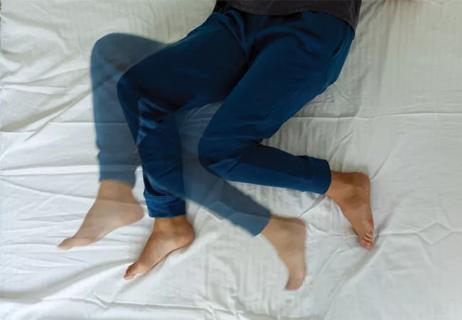Testing options and therapies are expanding for this poorly understood sleep disorder
Idiopathic hypersomnia (IH) is a central nervous system disorder of hypersomnolence that is less well known and studied than narcolepsy. The diagnosis of IH is often missed or delayed, pointing to a need for wider acceptance of alternate diagnostic modalities.
Advertisement
Cleveland Clinic is a non-profit academic medical center. Advertising on our site helps support our mission. We do not endorse non-Cleveland Clinic products or services. Policy
“There is a recognition in the sleep scientific community of a significant gap in understanding of the neurophysiology and neurobiology of idiopathic hypersomnia — and a resulting lack of targeted therapies,” says Nancy Foldvary-Schaefer, DO, Director of Cleveland Clinic’s Sleep Disorders Center. “This is an unmet need in the sleep field.”
In the latest episode of Cleveland Clinic’s Neuro Pathways podcast, Dr. Foldvary-Schaefer discusses the diagnosis and management of IH. She provides insight on:
Click the podcast player above to listen to the 30-minute episode now, or read on for a short edited excerpt. Check out more Neuro Pathways episodes at clevelandclinic.org/neuropodcast or wherever you get your podcasts.
This activity has been approved for AMA PRA Category 1 Credit™ and ANCC contact hours. After listening to the podcast, you can claim your credit here.
Podcast host Glen Stevens, DO, PhD: If I have IH, how many hours of sleep is too much sleep? And I guess I have to feel not rested when I wake up. What’s the definition?
Dr. Foldvary-Schaefer: The requirement for testing, which would be based on actigraphy or an expanded polysomnogram if the MSLT [multiple sleep latency test] is not abnormal, would be 11 hours. But the clinical criteria have changed over time. And the sleep laboratory criteria have changed, too.
Advertisement
There is a subset of idiopathic hypersomnia patients who have what we call long sleep time. These are the 10-hour-plus sleepers — 10, 12 or 14 hours in a 24-hour period. There are also patients who otherwise have the phenotype of idiopathic hypersomnia and objective abnormalities in the laboratory who sleep less, maybe 8 or 9 hours. It doesn’t seem like there are significant differences between these groups in some ways.
In fact, in clinical trials of one of the medications that we’ll discuss, both groups responded well to medication. But we generally think of the IH patient as being a deeper, longer sleeper than the narcoleptic. Many patients with IH choose not to nap during the day because their naps make them feel more groggy. They wake up with sleep inertia or sleep drunkenness, which is one of the key clinical criteria that differentiates IH from narcolepsy. Patients say it is really miserable to be in that groggy state and have to work yourself awake, which can take many minutes or even hours for some people with IH.
Dr. Stevens: If you look at a patient’s polysomnogram, can you determine what level of sleep they’re in? Can that give a clue, or is it not part of the criteria?
Dr. Foldvary-Schaefer: It’s not part of the criteria. The IH patient has a higher sleep efficiency in the sleep lab, so I look for that. I look for more deep sleep and less arousals. In fact, my computer scientist colleague is doing machine learning on EEG signals in our polysomnograms — others have done this too — to see whether we can find biomarkers in the sleep lab that would help us differentiate IH from narcolepsy and from other undifferentiated hypersomnias to advance the field.
Advertisement
Advertisement
Advertisement

Study highlights value of sleep disorder screening and targeted management strategies

Specificity in study criteria yields sleep disorder insights

Large cohort study suggests need for routine sleep screening as part of neurological care

Normal or inconsistent MSLT results should not rule out this debilitating disorder

Advice for diagnosing and managing sleep disturbances in children

Bedroom safety, medication use and ethical dilemmas are addressed

Insights into the six major categories of sleep disorders

Study explores association between sleep aid and eye disease